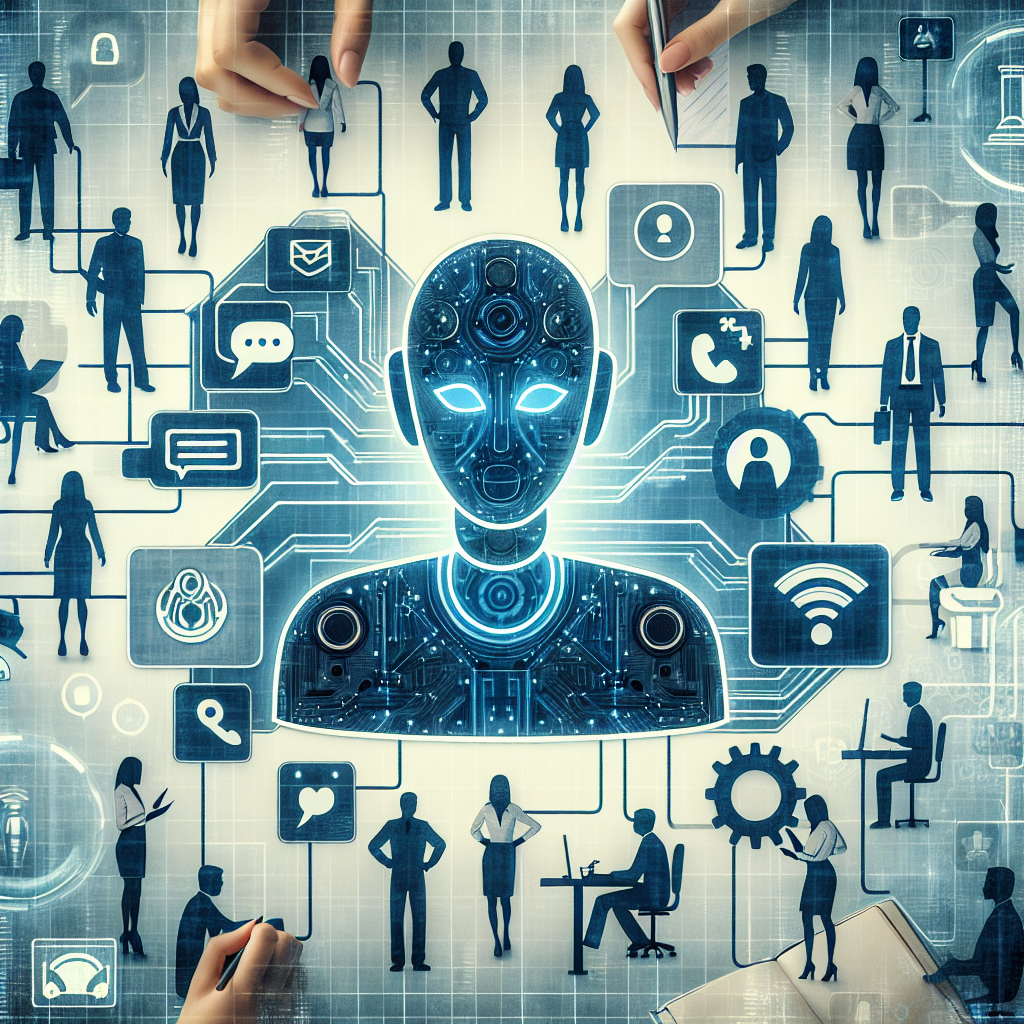Conversational AI, also known as chatbots or virtual assistants, has been gaining popularity in various industries, including Human Resources (HR). With advancements in technology, businesses are increasingly turning to these AI-powered tools to streamline their HR processes and enhance the overall employee experience. In this article, we will explore the use of conversational AI in HR, its benefits, challenges, and best practices.
What is Conversational AI in HR?
Conversational AI in HR refers to the use of artificial intelligence technology to automate and streamline various HR-related tasks and processes. These AI-powered chatbots or virtual assistants are designed to interact with employees in a conversational manner, providing them with information, answering their queries, and assisting them with various HR-related tasks.
Conversational AI in HR can be used for a wide range of purposes, including:
– Employee onboarding: Chatbots can guide new hires through the onboarding process, providing them with information about company policies, benefits, and procedures.
– Employee self-service: Chatbots can help employees with common HR tasks, such as updating personal information, requesting time off, or accessing training materials.
– Recruitment: Chatbots can assist with the recruitment process by screening candidates, scheduling interviews, and providing updates on the status of their application.
– HR analytics: Chatbots can help HR professionals access and analyze data related to employee engagement, performance, and other HR metrics.
Benefits of Conversational AI in HR
There are several benefits of using conversational AI in HR, including:
1. Improved efficiency: Chatbots can handle routine HR tasks, such as answering employee queries or processing leave requests, much faster than human employees. This can help HR departments save time and resources, allowing them to focus on more strategic initiatives.
2. Enhanced employee experience: Chatbots can provide employees with instant access to information and support, improving their overall experience with the HR department. This can lead to higher employee satisfaction and engagement.
3. Greater accessibility: Chatbots are available 24/7, allowing employees to access HR support whenever they need it, regardless of the time or location. This can be especially helpful for remote or global teams.
4. Data-driven insights: Chatbots can collect and analyze data on employee interactions, helping HR departments gain valuable insights into employee needs, preferences, and trends. This data can inform decision-making and improve HR processes.
Challenges of Conversational AI in HR
While conversational AI offers many benefits, there are also some challenges to consider, including:
1. Integration with existing systems: Implementing conversational AI in HR requires integration with existing HR systems and processes. This can be complex and time-consuming, especially if the systems are outdated or not compatible with AI technology.
2. Data privacy and security: Chatbots collect and store sensitive employee data, raising concerns about data privacy and security. HR departments must ensure that chatbots comply with data protection regulations and have robust security measures in place.
3. User adoption: Some employees may be hesitant to interact with chatbots or prefer traditional methods of communication. HR departments must educate employees about the benefits of conversational AI and provide training on how to use chatbots effectively.
Best Practices for Implementing Conversational AI in HR
To successfully implement conversational AI in HR, organizations should follow these best practices:
1. Define clear objectives: Before implementing conversational AI, HR departments should identify their goals and objectives for using the technology. This will help them determine the specific use cases and functionalities they need to focus on.
2. Choose the right platform: There are many conversational AI platforms available in the market, each with its own features and capabilities. HR departments should carefully evaluate different options and choose a platform that aligns with their requirements and budget.
3. Train the chatbot: Training the chatbot is crucial to ensure that it can effectively interact with employees and provide accurate information. HR departments should provide the chatbot with relevant HR policies, procedures, and FAQs to help it respond to employee queries.
4. Monitor and optimize performance: HR departments should regularly monitor the performance of the chatbot and gather feedback from employees to identify areas for improvement. This can help optimize the chatbot’s responses and enhance the overall user experience.
FAQs about Conversational AI in HR
Q: How can conversational AI improve the recruitment process?
A: Conversational AI can assist with screening candidates, scheduling interviews, and providing updates on the status of their application, reducing the time and effort required by HR professionals.
Q: Are chatbots able to handle sensitive employee data securely?
A: Yes, chatbots can be programmed to comply with data protection regulations and have robust security measures in place to ensure the confidentiality and security of employee data.
Q: How can HR departments measure the effectiveness of conversational AI?
A: HR departments can measure the effectiveness of conversational AI by tracking metrics such as response time, user satisfaction, and the number of queries resolved. This data can help them identify areas for improvement and optimize the chatbot’s performance.
In conclusion, conversational AI offers numerous benefits for HR departments, including improved efficiency, enhanced employee experience, greater accessibility, and data-driven insights. While there are challenges to consider, such as integration with existing systems and data privacy concerns, following best practices can help organizations successfully implement conversational AI in HR. By defining clear objectives, choosing the right platform, training the chatbot, and monitoring performance, HR departments can leverage the power of AI technology to streamline their processes and enhance the overall employee experience.

